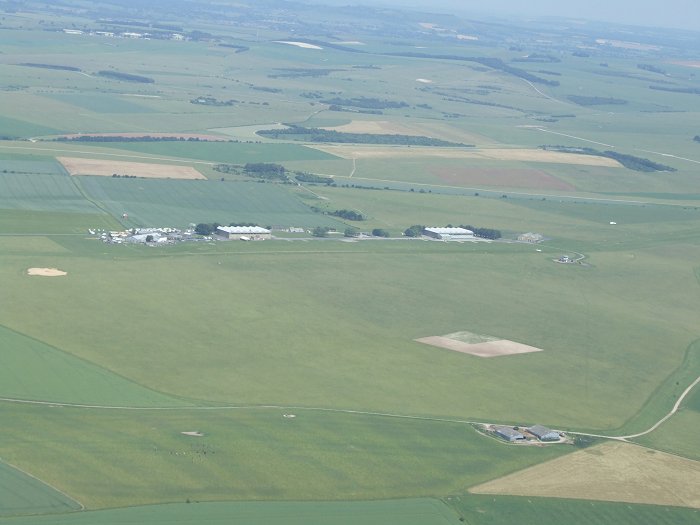
Netheravon
Netheravon holds a key place in the history of military aviation having had a hand in the birth of the RFC, the RAF,
the Fleet Air Arm and the original Army Air Corps.
In 1912, 2 (Aeroplane) Battalion became 3 Sqn Royal Flying Corps, living under canvas before more permanent accommodation
could built for them. Some of these original buildings are still in use today - the first purpose-built accommodation
structures to be erected for the RFC's operational squadrons.
In 1914 the military wing of the RFC gathered in Netheravon for what was known as the "Concentration Camp" to discuss
principles and operational techniques for the world’s first effective air force. They experimented with methods of
observation, reconnaissance, photography, offensive action and direction of fire and undertook the first aerial use
of ‘wireless telegraphy’.
Shortly after the Concentration Camp, war was declared. Together with the Central Flying School at Upavon,
Netheravon was one of the main training bases where new pilots learned how to fly and it was the forming-up location
for many of the squadrons destined for the Western Front.
The RFC became the Royal Air Force at the end of the First World War. Netheravon became No. 1 Flying Training School
and home to a bomber squadron. The first pilots of the Fleet Air Arm were trained here when the Admiralty gained control
of ship-borne aircraft in 1924 and it was here that the first military rotary-wing flying trials took place in 1933.
Between the wars Netheravon was the venue for the world record free-fall parachute jump from 20,000 feet, and in 1937 a
new height record was set by an aircraft climbing to over 53,000 feet.
The outbreak of the Second World War accelerated the need for pilots and the Flying Training School was kept busy.
Netheravon was at the forefront of radical change in aerial warfare when in 1942 the advance party of the Glider
Exercise Squadron arrived. Within a month, the first gliders were being flown from Netheravon. From then on parachute
and glider borne troops learned their trade at Netheravon, which was a highly important station throughout the war.
Although Dakota transport aircraft continued to operate from Netheravon after the war, RAF flying declined and in the 1950s
Netheravon became the Depot and training centre for the RAF Police.
The RAF finally left Netheravon in 1963 and it was used as a transit camp for units exercising on Salisbury Plain until
the Army Air Corps took it over in 1966. They were grateful for the space as Middle Wallop could no longer cope with the
expansion of Army Aviation.
The major station unit today is 7 Regt AAC(V), formed in 1969, whose main role is to provide liaison flying for the Regular
Army and general aviation support for the Territorial Army.
Information courtesy of Drumbeat: http://www.drumbeat.org.uk/
Back to